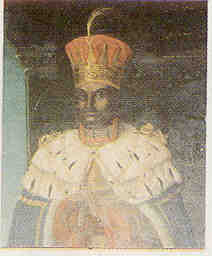Muhammad Ali Shah
| Muhammad Ali Shah | |||||
|---|---|---|---|---|---|
| King of Oudh | |||||
 | |||||
| King of Awadh | |||||
| Reign | 7 July 1837 – 7 May 1842 | ||||
| Coronation | 8 July 1837, Farhat Bakhsh Palace, Lucknow | ||||
| Predecessor | Nasir-ud-Din Haidar Shah | ||||
| Successor | Amjad Ali Shah | ||||
| Born | 1774 Lucknow | ||||
| Died | May 7, 1842 (aged 67–68) Farhat Bakhsh Palace, Lucknow | ||||
| Burial | Husainabad (Chhota) Imambara, Lucknow | ||||
| Issue | Asghar Ali Shah Amjad Ali Shah Wajid Ali Shah Mirza Jawad Khan [1] | ||||
| |||||
| House | Nishapuri | ||||
| Dynasty | Oudh | ||||
| Father | Saadat Ali Khan II | ||||
| Religion | Shia Islam | ||||
Nasser-ud-daula Mu'in ad-Din Muhammad Ali Shah (1774[2] – May 7, 1842), was the third King of Oudh from 7 July 1837 to 7 May 1842.
Biography[]
Muhammad Ali Shah was son of Saadat Ali Khan II, brother of Ghazi-ud-Din Haidar Shah and uncle of Nasir-ud-Din Haidar Shah.[3] He attained the throne with British help following the demise of his nephew, as opposed to the ex-queen mother's (Padshah Begum) attempts to nominate another successor, Munna Jan (the son child of Nasir-ud-Din Haider, whom his father had disavowed). Padshah Begum and Munna Jan were afterwards imprisoned by the British in the fort of Chunar. [4]
Muhammad Ali Shah of Oudh built the Shrine of Hurr at Karbala.[5]
Death[]
He died on 7 May 1842 AD.[6]
Gallery[]

The crown of Muhammed Ali Shah Bahadur, kept in Chhota Imambara

Chhota Imambara in Lucknow
References[]
- ^ Sleeman, William (1858). A Journey through the Kingdom of Oude. Richard Bentley.
- ^ White, W (1838). The Prince of Oude, or, The claim of the Nawaub Ekbal-ood-Dowlah Bahador to the throne of Oude. William Strange. p. 82. ASIN B0006F9CDK.
- ^ HISTORY OF AWADH (Oudh) a princely State of India by Hameed Akhtar Siddiqui
- ^ Sleeman, William (1858). A Journey through the Kingdom of Oude. Richard Bentley.
- ^ Al Mashad al Husain-Karbala: Phases of Destruction & Restoration « Muslim Unity
- ^ History Of Lucknow Archived 10 June 2008 at the Wayback Machine
Notes[]
External links[]
- Indian Shia Muslims
- Nawabs of Awadh
- 1842 deaths
- 1777 births

